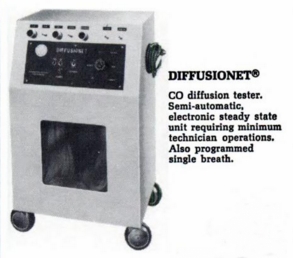
Found in “Diseases of the Chest”, published by American College of Physicians and Laennec Society of Philadelphia. Council on Post-Graduate Medical Education, World Bank Publications, 1968, page v.

Found in “Diseases of the Chest”, published by American College of Physicians and Laennec Society of Philadelphia. Council on Post-Graduate Medical Education, World Bank Publications, 1968, page v.
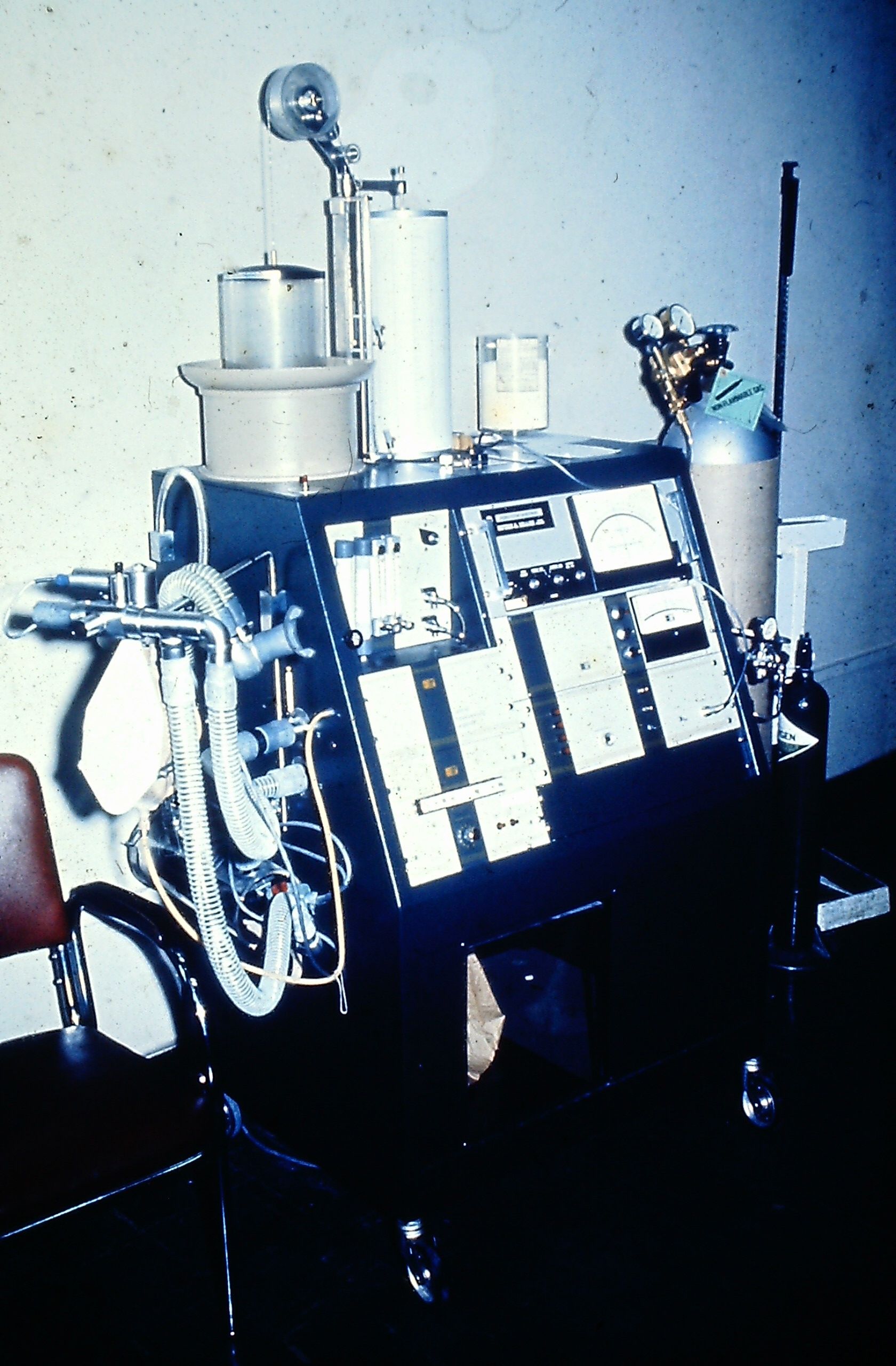
Photograph provided by Richard Johnston & Carl O’Donnell
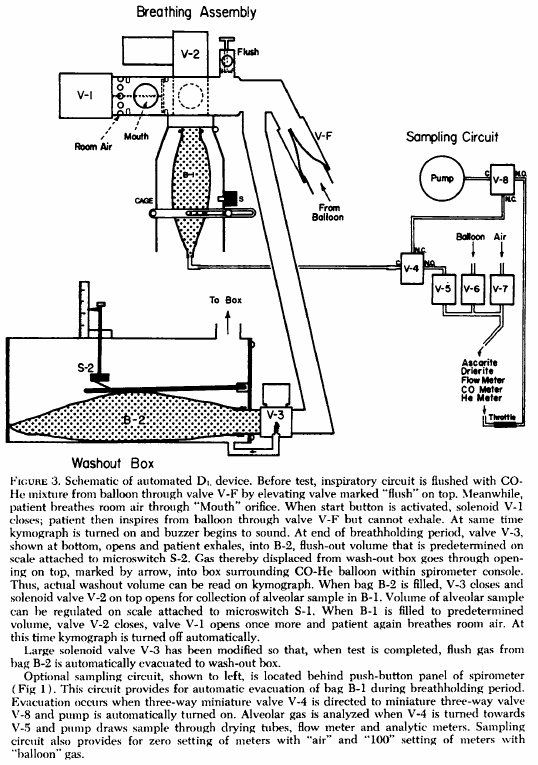
From Gaensler EA, Smith AA. Attachment for automated single breath diffusing capacity measurement. Chest 1973; 63: 136-145.
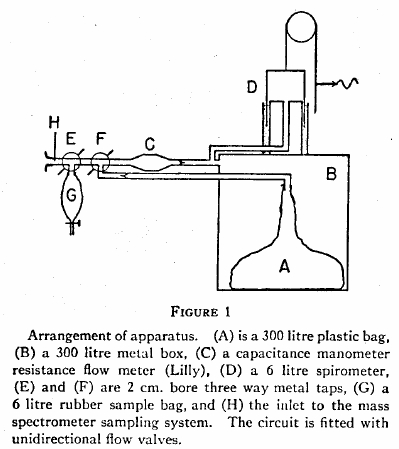
From Forster RE, Fowler WDS, Bates DV, Van Lingen B. The absorption of carbon monoxide by the lungs during breathholding. J Clin Invest 1954; 33: 1135-1145
“Inspiration was made from a neoprene bag (A) contained in a sealed metal chamber (B). Expiration was made through the flowmeter (C) into chamber (B). A 6-liter spirometer (D) recorded changes of total volume in the system. Two 2 cm. diameter three-way taps (E and F) were provided. Tap E enabled the subject to breath out the first liter of an expiration into the circuit, and to collect the remainder in a rubber bag (G) close to the mouthpiece. Tap F permitted closure of the inspiratory bag to prevent loss of the inspired gas. The inlet (H) to the mass spectrometer sampling tube was at the mouthpiece.”
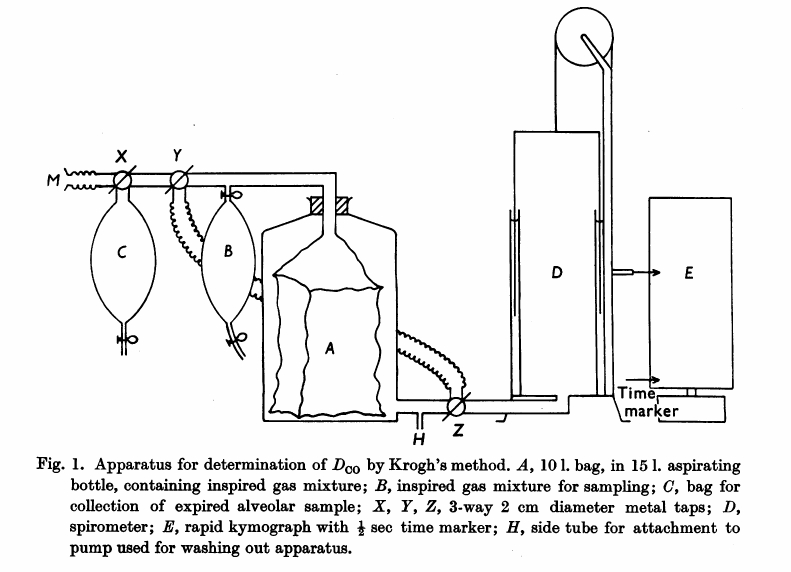
From Bates DV, Pearce JF. The pulmonary diffusing capacity; a comparison of the methods of measurement and a stuudy of the effect of body position. J Physiol 1956; 132: 232-238.
“The measurement of diffusing capacity by this technique was performed by the method described by Forster et al (1954) with the following slight modifications; (a) the helium concentrations were measured by katharometer and not with a mass spectrometer; (b) the duration of the breath-hoding was accurately timed on a rapid kymograph record since this could not be done from the mass spectrometer record.
“Details of this circuit are shown in Fig 1. The procedure used was as follows. The apparatus was prepared by filling bag (B), the envlosed bad (A) and the connecting tubing with inspired gas of the following composition: He, 14%; N2, 65.7%; O2, 20%; CO, 0.3%; from a prepared cylinder of this mixture. Mixing was ensured in the apparatus by alternate pressure on bag B and on the spirometer. The spirometer itself and the aspirating bottle contained air. Tap Y was turned to connect the mouthpiece with the flexible tube that joins with tap Z. The latter was turned to that all three limbs were in communication. The subject, wearing a nose clip, now breathed from the spirometer through the mouthpiece, and his quiet respirations were recorded on the kymograph. On command, he expired to his full extent, tap Y was turned, and he took a full inspiration from A as quickly as possible. He held his breath about 10 sec as timed by a stopwatch, and expired as rapidly as possible. After about 1 l. had been expired, as indicated on the kymograph, the operator turned tap X to collect the alveolar gas in bag C, which had been previously evacuated. After the sample had been collected in bag C, tap X was turned to its previous position. The duration of collection of the expired alveolar sample was checked from the kymograph…”